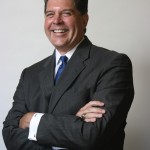Big Nonprofit Ideas for the Other 95%
I love our sponsors!
Do you want to find more prospects & raise more money? Pursuant is a full-service fundraising agency, leveraging data & technology.
It’s not your 7th grade spelling bee! We Bee Spelling produces charity fundraiser spelling bees with stand-up comedy, live music & dance. It’s all in the video!
Get Nonprofit Radio insider alerts!
Listen Live or Archive:
- On Fridays at 1pm Eastern: Talking Alternative Radio and tune in
- Listen to the January 20, 2017 archived podcast
My Guests:
Rob Mitchell, Paul Schervish & Doug White: 2016 Giving Report & 2017 Forecast
No need to wait until June! Atlas of Giving CEO Rob Mitchell releases the Atlas’ analysis of last year’s giving and their initial forecast for 2017. Also, insightful commentary from professors Paul Schervish from Boston College and Doug White from Columbia University.
Top Trends. Sound Advice. Lively Conversation.
You’re on the air and on target as I delve into the big issues facing your nonprofit—and your career.
If you have big dreams but an average budget, tune in to Tony Martignetti Nonprofit Radio.
I interview the best in the business on every topic from board relations, fundraising, social media and compliance, to technology, accounting, volunteer management, finance, marketing and beyond. Always with you in mind.
Get Nonprofit Radio insider alerts!
Sponsored by:
Processed on: 2018-11-11T23:34:06.308Z
S3 bucket containing transcription results: transcript.results
Link to bucket: s3.console.aws.amazon.com/s3/buckets/transcript.results
Path to JSON: 2017…01…323_tony_martignetti_nonprofit_radio_20170120.mp3.710337333.json
Path to text: transcripts/2017/01/323_tony_martignetti_nonprofit_radio_20170120.txt
Hello and welcome to tony martignetti non-profit radio big non-profit ideas for the other ninety five percent it’s inauguration day today we have a listener of the week i know which is more important for non-profit radio listener of the week is more important. Karen graham she e mailed me your whole hair thing is cracking me up. Thank you for bringing that joy into my day. Well, karen, thank you for taking such an interest in my exceedingly long hair. Longest it’s ever been in my life. I’m glad it brings you joy and i would ask you to speak to my mother about this, please, because she is routinely reminding me that her salon also cuts men’s hair on dh she’s threatening scissors while i’m sleeping, so i’ll give you her contact info. Ah, now karen is executive director of idealware, which i admire very much idealware dot or ge, i did a video praising them a few weeks ago, which you’ll find at tony martignetti dot com i don’t think you’ll find the video at idealware dot orc, which i’m most disappointed about franklin att leased a link you could’ve shared the link, i thought, but idealware is a very good organization dahna karen graham, executive director congratulations on being our listener of the week. I’m glad you’re with me. I’d be stricken with keto acid urea if you rained down on me with the idea that you missed today’s show twenty sixteen giving report and the twenty seventeen forecast no need to wait until june. Atlas of giving ceo rob mitchell releases the atlases analysis of last year’s giving and their initial forecast for twenty seventeen also have insightful commentary from professor of paul schervish for boston college and doug white on tony’s. Take two videos from the non-profit technology conference we’re sponsored by pursuant full service fund-raising data driven and technology enabled, you’ll raise more money pursuant dot com, and by we be spelling supercool spelling bee fundraisers. Wee bey e spelling dot com i’m very glad to welcome rob mitchell back he’s uh, but on the show three, four times or so he’s, the ceo of atlas, of giving, you’ll find that at atlas of giving dot com he’s at philanthropy man or, as i like to say at philantech roman, which he probably gets tired of hearing me say, but it’s my show. I do whatever the hell i want. Is that philanthropy? Hman? That’s the end of it. Welcome back, rob mitchell. Thanks, tony it’s. Always great to be with you. It’s. A pleasure to have you. Thanks for coming up from texas. Thank you very much. So you’re you’re here to well, you’re here to release the the review of twenty sixteen and the forecast for twenty seventeen remind us, please. What is going on it atlas of giving. What is this all about? Atlas of giving at the atlas of giving what we do is we measure and forecast charitable giving by sector by source and by state, including washington d c and we release our information monthly it’s. Our forecast is updated each month. Our calculation of giving is updated by sector source and state each month. And our methodology is based on sixty five algorithms. What we did was we we had a team of twenty five phd level statisticians and analyst revue factors that we thought affected giving and two that they they added fifty percent mohr and they actually determined and what fact? What economic? Demographic and event factors are involved in charitable giving. And what their relative weights were for each category. For instance, the algorithm for corporate giving is very, very different from the algorithm for ah ah, church giving let’s say, so this this there are some commonalities, but they’re also. And when i say when i say correlation, this is based on what’s called correlation science a correlation, even a strong one does not necessarily indicate that that there is a relationship, and one example i’ll give you is that in our in our corporate giving algorithm, one of the key factors is auto parts sales. Now we don’t for a minute believe that auto parts sales have anything to do with charitable giving, but there is a strong there is a strong relation that variable correlates with that form of giving exactly for reasons that we could speculate. But in numerical regression analysis, those factors air correlated those two variables exactly correlated and just just so you know, this is the same kind of technology that the fed uses hedge funds use. I trust you, you’re a bona fide and and interestingly enough, the the auto parts sales is also part of one of the feds algorithms we found out so and one of the things we found recently because we’re continually trying to improve our algorithms and learned from them is that large equipment manufacturing index has a strong correlation with national giving. Okay, all right. We’re not gonna go too much into the mechanics of the details of it. Okay, but that’s, interesting large equipment manufacturing. And what was i just i’m sorry. What part in order parts sales, uh, related to fund-raising who knew, right? We do. We do now. Okay. You have a headline for us. Let’s. First talk about what, twenty sixteen looked like for fund-raising. What happened? Well, in twenty sixteen, we had a record year for dollars given, and the dollars given was just shy of half a trillion dollars. It was four hundred ninety seven point four billion dollars given nationally doll causes. How does that relate to twenty fifteen? That is a four point one percent increase. Okay, over twenty fifteen. And what was twenty fifth? Twenty fourteen to twenty. Fifteen. Remember that? What was that increase? It was it was a double digit increases. Wass it? Wass okay. We’re coming on the tail end of the recession, i guess. Well, a lot of that had to do with what was happening in the stock market. And we’ll talk more about that. Ok, as we go on, okay, maura that alright. So four point, one percent increase from fifteen to sixteen were just under half a billion, half a trillion dollars in giving for one other important point to make is that. For for most people who are affiliated with non-profits or the non-profit industry, they have assumed, based on other information, that charitable giving has been pegged at two percent of real gdp for as long as we can remember. Yes, you have an announcement for this. Go ahead, we have we have charitable giving at almost three percent of real gdp, so two point nine, seven percent of real gdp and that is huge because the country has been talking about the stalled percentage of two percent of gdp for a long time. I mean, it certainly the six years that i’ve been doing this and probably longer than that. So now you’re putting at just under three percent of gdp, which is enormous, fifty percent increase your saying yes, all right, all right. And there’s a reason why, okay, we’re gonna hold that reason, okay? Till after this break, you’re gonna hold that and we’ll go away for a moment. But of course we’ll be back. We’re talking about the twenty sixteen review the twenty seventeen forecast to professors joining us, paul service and doug white. Stay with us. You’re tuned to non-profit radio tony martignetti also hosts a podcast for the chronicle of philanthropy fund-raising fundamentals is a quick ten minute burst of fund-raising insights, published once a month. Tony’s guests are expert in crowdfunding, mobile giving event fund-raising direct mail and donor cultivation. Really, all the fund-raising issues that make you wonder, am i doing this right? Is there a better way there is? Find the fund-raising fundamentals archive it. Tony martignetti dot com that’s marketmesuite n e t t i remember there’s, a g before the end, thousands of listeners have subscribed on itunes. You can also learn maura, the chronicle website, philanthropy dot com fund-raising fundamentals, the better way. Durney welcome back to big non-profit ideas for the other ninety five percent want tease i want to do a little live list, their love just a just a touch of the live listeners college station, texas, raleigh, north carolina and multiple right here in new york, new york, of course we’ve got our listeners abroad will get to those but still it’s a little taste of live listen love for now. All right, almost three percent let’s call a three percent two point nine seven what’s three one hundred’s between friends and colleagues let’s call it three percent of gdp. Why do you believe we’ve had this fifty percent increase? Well, there are a number of reasons they’ve been growing. One is the number of non-profits continues to grow and so now we way have but that’s always been the case and we always assumed to it seemed to be a zero sum game more non-profits entered, i don’t know, fifty thousand a year, so maybe one of the professors has a better number than that. But many, many new every year, and it’s still always stuck at two percent. Well, yes, but now we have technology and so there’s so many more different ways for people to give there’s so many there’s, so many more ways for people who are raising the money to get good information and good targeting about how they’re going to solicit money so fund-raising has become much more efficient, okay? And the only moral if, if that’s if it’s related to technologies, probably more adopting technology that we’ve had for a while, except for maybe you do things like text text to give is that is that that the person that would be one of one that i one that i love is crowdfunding kind of technology where you’re using social media to raise money for a cause? And so that didn’t exist. The other thing that well, i mean, it didn’t just come into existence in twenty sixteen. No, we’ve had crowdfunding no, no, no, no, no. Several years, no and but we didn’t just jump from two percent to three percent and one year either. Okay? It’s been creeping out. So what was the percentage last year? The percentage of gdp? The percentage last year. Wass i don’t remember. Okay, but it was something less than two point nine seven it wass okay, okay. Um all right, so we’re we’re at three percent now. That’s that’s, that’s a big deal. It is a big deal. This has been stale or stagnant. Stay lt’s. Wrong word stagnant for a long time. Okay, um, let’s talk about some of the different sectors that have benefited from this this increase since since last year there four point, one percent increase. I always i’m always crease about religion because religion is you and i have talked over the past couple years has always been a shrinking proportion. It’s been the largest of all the sectors but it’s been a shrinking proportion. Yes, ten years ago, gifts to churches and congregations accounted for fifty percent of all giving in the urals. Now, it’s, what thirty would you have? A thirty one. Thirty two percent metoo and did it lose lose a percent from last year? We’re projecting that it’s going to lose a percent from this year to next year. Okay, so it stayed steady because last year it had lost a percentage. Yes, it from fifteen to sixteen and lost a percent. And i’m pretty sure from fourteen to fifteen lost two percent, so i’ve never talking about that with you. Because now it’s steady. But you’re projecting a loss for next year. Yes. Okay. But it used to be fifty. Used to be fifty now. Thirty two. Okay. And the reason why is that the united states is becoming more like western europe. It’s becoming more secularized. Fewer and fewer people are joining congregations supporting congregations. But what’s interesting is that you mentioned zero sum game? E-giving is still growing so that the gifts air going. Other places. They’re just not going to religion. Yeah, clearly right. And really one of the one of the fastest growing sector of the fastest growing sector over the last three years has been the environmental sector and it is the smallest sector. It only accounts for two percent of all giving. But at the rate it’s growing it’s, it’s, it’s astounding. And then human needs organizations have also done quite well and education. The education sector has grown. Those air the three fastest growing sectors and have been for the last three. Well, really, since the end of the recession? Um, education is explained by the way that they raise money because one of the things we found at the alice of giving is that it’s not so much about the quote economy, its factors in the economy, it’s factors of demographic that’s because about your algorithms, you’re your algorithms have found the variables, the aii factors that that car late with e-giving so are two professors air well well acquainted with the fact that most universities go from campaign to campaign and lots of campaign contributions come out of come out of aa gains in the stock market or gains in real estate. And so when the stock market does well, education does well about the environment. What what’s what’s happening there? I think that the biggest factor in the environment is awareness you can’t not. You cannot turn on any of your i once heard a guy say a few years ago that the time has come when you can pick your version of the truth through the news. Yeah, and so but truthfully, no matter what your source of news is, you can’t escape the fact that we’re always talking about the environment now, climate change, we’re talking about climate change. We’re talking about the instruments to defer climate change things like solar panel and wind power and other alternative energy sources i mean, elon musk is making ah is making billions of dollars capturing energy and batteries and using that do you see in your twenty seventeen forecast on increase in market share for the environment from larger than two percent? No, you don’t say no. You see it’s continuing to grow, it is narrowing and it’s growing faster than to grow, but not more than than its current share. Two percent not more. That’s correct. Okay. We could be wrong, though, because remember this is this forecast that we’ll talk about today. It’s just the first of eleven for forecast will do throughout the year. So we update we we update our forecast every month. And the example that i love to give is two thousand won two thousand one was bumping along to be a great e-giving your ah relatively good giving here. And then september eleventh happened. And if you were a non disaster charity what we know today having backfilled information now for fifty years is that giving dried up? If you’re a non disaster charity, pretty much for six months and then came roaring back let’s stop talking around. The forecast and let’s talk about the forecast for twenty seventeen. What do you see happening? We’re looking for growth of four point four percent nationally. Four point four versus four point one for this year. So a little bit more growth. Yes. And and what? What dollar amount? Does that come to the dollar amount over half a trillion. Right. It’s going to be over half a trillion? Yes. Okay, okay. Ah, looks like five hundred nineteen five in nineteen billion. Five hundred nineteen. Okay. Now again, we’re with the caveat. I understand this is your first forecast of eleven of eleven more to come for twenty seventeen each month. You update the annual forecasts. That is that right? We do well, so it’s a rolling twelve month forecast. So our forecast contains a forecast for next month for the next three months for the next six months for the next twelve months. And then we also update the calendar year forecast every month. Okay. What do you ah, what else do you foresee for twenty? Seventeen around around let’s. Talk about the let’s. Talk about the sources because you mentioned some of the sectors that you see sector. Growth in twenty seventeen about from sources, foundations, corporate bequest, individuals, et cetera. What do you have there for? Twenty seventeen? Well, the biggest change i see is in corporate giving and co e-giving as as many people know, is is not a large percentage of source giving in the united states, only five percent. We’re gonna talk about that when we bring the professors in, i might like to i’d like to chat a little bit about why that is to me that small maybe i’m wrong, but alright, so martignetti e-giving corporate giving this year this year just past twenty sixteen was double digit growth ten point three percent. What we’re projecting for next year for corporate giving is only one point, eight percent. All right? Uh still grow. I’m looking at that and i understand that’s growth. I’m talking about the share. The proportional share of total giving for corporations is only five percent. All right? I’ll tell you what, let’s, let’s bring in our professors because we’ve talked about the headlines let’s. Bring in doug white he’s, former professor and director of columbia university’s, master of science in fund-raising management, his most recent book is abusing donors intent, which we discussed here. I was going to tease him about that having been three years ago. And what’s happened since. But now i find out that he’s writing another book for later this year. Doug white, welcome back. Well, thank you for having me back. It’s. Good to see you again. Even with your long hair, can’t avoid it. Just call him sampson. You and karen clams. And i thought it was einstein. I prefer fabio. If you’re gonna if you’re gonna make any references. Let’s, make it fabio. Paul service she’s on he’s on the line with us from north carolina. He’s, professor emeritus at boston college, where he led the center on wealth and philanthropy. He helped to found the wealth and giving forum appear centered endeavour to deepen the philanthropic engagement of the nation’s seven thousand wealthiest families. Pull service. Welcome back. Hello. Nice to be back in a load up. Pleasure to have you all you both with us. Let’s. Uh, let’s. Give difference to the guy on the phone because he’s a slight disadvantage. Paul sharpish. What sticks out? Let’s? Start with the twenty sixteen review before we get to the twenty. Seventeen forecast which look out for you in the in the review of twenty sixteen, giving the that growth that occurred in twenty sixteen i think that the story in all of these numbers is that the amount of giving is growing twenty billion a year over the last few years and at four percent it’s going to grow faster than that. The compounding uh, this is a remarkable trendline that twenty sixteen confirms and the projections for twenty seventeen indicates the continuation of that. So you love about going the amount going charity is incredible and growing. You love this that we’re now three percent of gdp. Yes. And when we did our well transfer models, we found that if the goose’s growth and wealth and tdp the biggest growth and so after pete and so if the economy grows, we’re going to find dramatic, even greater dramatic roles in philanthropy. Doug white, let’s, let’s bring you in. But what strikes you about? Twenty sixteen? Well, what paul just said is a continuation off his studies back in the nineties and nearly two thousand with regard to what’s going to happen, and i think we’re seeing it take place. Right now twenty sixteen for me was defined by the mega gift there were so many of them and what i don’t have my fingertips is thie analysis of how the smaller gifts have grown. The number of smaller gifts have grown, but we do know that the mega gifts have have been more than they’ve ever been before. That has to be a fact er in your number’s right, rob it iss, in fact, twenty fifteen there were more mega gifts than there were in twenty sixteen, actually, so it is a factor you talk about a zuckerberg gift or another gift from the gates foundation, or or those kinds of things it’s it mega gifts are huge factor, but another factor is what we’re finding and i’d be interested in. The opinion of our two experts is what we’re finding is that millennials are a e-giving group of individuals and they’re looking for they’re not looking for cost per dollar, raised as their measurement there, looking for effectiveness and accountability on who they give, too, but they are an active force and philanthropy. The big gains that we’ve had in online giving in technology e-giving come largely from that group of people dug millennials. I totally agree with that and i think that’s one of the bigger challenges for the established charities around the united states who have become used to just the annual giving, continuing in continuing, which is fine, but i think the millennials, they’re saying they’re asking different questions, they’re not saying, am i loyal to this cause? They’re asking, even if i am loyal to this cause, how effective is my gift? And i think the question of impact we use that word, a lot of it is a topic of my new book. The question of impact is so important it should be, but now it’s important to the millennials because his roberts saying they give individually they give to causes that they can see an impact in or from paul what’s, your sense of what’s creating thiss terrific growth it’s, it’s, it’s, the dramatic growth of wealth at the very top. And what doug said is absolutely correct. Maybe gifts capture one dimension. What captures a larger slot? This is the million dollars and these air increasing and the list is getting longer, and i think, uh, that’s also helps explain the decline in religious e-giving ah, religious giving this to churches and the upper end does not give proportionately, uh, to their churches in the same ratio that the bottom ninety five percent of the population does so part of this change in religious e-giving is that so muchmore is going to education two new kinds of ventures to international to environment to social needs, and at the very top the percentage that they give to their churches is minuscule compared to how much they give the other causes. So that is part of not just the secularization which i agree with, but part of this is where the making gifts you’re going. Well, paul, how come we’re not cracking this seventy three, seventy four percent proportion that individuals account for in the total pie of giving? How come it’s it’s sticks there if we’re seeing all the us? Yeah, you? Yes, paul. We’re seeing all these mega gifts and the million dollar gifts. How come we’re not getting past the seven? The mid seventy figure? Well, one of the things is we just found out the foundation growth is is dramatic. Most of foundation growth and requests are individual gifts. And so when we’re looking at individuals, you have to understand what the is going on inside of individuals and that’s private foundations to it’s also the quest and it’s also remittances. Now, doug, i would say that report by your very astute ah research on remittances would be important. See what we’re finding out in some places that a lot of immigrants air not contributing, quote unquote to philanthropy. But the number iss between one hundred fifty and two hundred billion a year, that is sent back overseas largely to people in need buy-in immigrants recent immigrants alright, let’s, turn to let’s start to doug remittances. Well, that’s a good point that a lot of money does go back. And that’s, of course not counted in this whole process here in terms of generosity, the way we define charity, the way we defined, making the world a better place. That’s a huge part of that and it’s unfortunate. We can’t capture that. But we’re not talking about that and technical terms right now, but we really ought to, because it’s a an expression of our our society’s beneficence. And i really think that’s an important thing but there’s one other question that i just wanted to point out, or at least clarify from my own perspective, is that this really is a zero sum game. There’s only one hundred percentage points that we have to work with and so to actually ask or worry about, we’re only a seventy five percent those air living individuals, you know, on the other five percent, we have dead individuals, they’re still individuals. A question requests that’s really kind of eighty percent. I can’t. We could only go one hundred percent, but that’s on ly if nobody else gave anything, the foundations are the corporations. So i suspect it’s going to stay that way, in fact, has been their seventy five and five for the last long as i can remember. Well and paul’s point, of course, that a lot of the foundation giving is individuals directed by individuals. But it comes from the private found a it’s, just a medium. So as an expression of individual philanthropy, i think paul is correct. I would throw in the individual philanthropy into the foundation world and donor advised funds. Oh, yeah. We’re going to continue this conversation. I gotta do a little business. I have to talk about a couple of our response duitz and we’re going to get to donor advised funds after this pursuing pursuing dot com between brexit, the syrian refugee crisis and the inauguration of a new president today, the national and global climates have a lot of implications for what you can expect in your fund-raising we’re going to talk about some of those events later today. The next pursuant webinar is field guide to twenty seventeen fund-raising it’ll give you strategies that you need to keep up with. Everything is going on in the world. It’s a free web in or they always are. You register at pursuing dot com go to resource is and then webinars and i’m not too keen on that word. Webinars i don’t know it’s it’s in the lexicon now we’re stuck with it, but i don’t know i never liked it from i never like to from the beginning maybe i didn’t go public, but i’m expressing now webinars i don’t know, it’s just i think we could come up with something better than webinars. I understand where it comes from way have been seminar, but i don’t like it and i was early. I just i just wasn’t public early. We’ll be spelling spelling bees for fund-raising they have a new video up it’s from a night that raised money for hfc, which is help for children. The organisation needed help for its programs for children they turned to we’d be spelling there’s one hundred and ten thousand dollars in a spelling bee night. Check out the video it’s at wi be e spelling dot com. I’ve got video interviews for you from the twenty sixteen non-profit technology conference. Twenty twenty sixteenth. God, i need an intern, so i have someone to blame the twenty sixteen non-profit the the video is titled virtual organizations and volunteers. There are four interviews in those areas, and they are on managing remote employees, managing remote volunteers where to find volunteers and leveraging your start or tech volunteers. My video from the twenty sixteen non-profit technology conference with the links to the four interviews is that tony martignetti dot com and i, uh i suggest you check out this year’s non-profit technology conference twenty seventeen and t c this is always a very smart conference. I say it often because i believe it. Check out. Ntcdinosaur washington, d c this year, march twenty third, you get the info it and ten dot or ge, and that is tony’s take two the rest of the live listen, love, you know, it’s got to go out. I mean, there’s, no question about that. Besides the ones i already mentioned, we’ve got tampa, florida we’ve got forming ten missouri welcome farming to missouri. You haven’t been with us before. Welcome and somerville, new jersey! Welcome live listener love to you, let’s. Go abroad, of course. Seoul, south korea, always checking in so loyal south korea on your haserot comes a ham nida. We’ve got kiev in ukraine. No, i don’t know the scouts just do it live listener love to ah to kiev, tokyo also very loyal multiple. We’ve got multiple tokyo konnichi wa and the podcast pleasantries to the over twelve thousand listening in the time shift so glad that you are with us whether it’s a week later, days, months later, glad to have you with us. Pledge industries toe are over twelve thousand podcast listeners and the affiliate affections fast on the heels of the live listen love in the podcast pleasantries toe are am and fm listeners throughout the country am fm stations. Let your station know that you’re listening little feedback affections to the am fm affiliate listeners. Okay, rob mitchell, you you seem to be chomping at the bit to talk about donorsearch vise dh funds e-giving first about donor advised funds. I am a big proponent of donor advice found about and i can tell you that they’ve been the one of the biggest contributors fromthe grants that they’re making out of donor advised funds, since the depth of the recession is this tract in in your algorithms is part of the individual giving. Is that where we see dahna vice funds? What? We saved an analogue kate id on allocated. Okay, okay. Don’t advise funds are are they’re not knew they came in with the tax act of sixty eight. Yeah, they they’re not new. But this company called fidelity an investment company. I saw an opportunity and the thing that i love about donor advised funds and and paul talked about this a bit. The rise of the million dollar gift i think donorsearch vice funds have a big part of that because a za contributor myself, if my daughter’s here in the studio, listening with us if our family adopted a charitable project for which we wanted to contribute. But we did not have enough money available to us to just scratch a check, we could create a donor advice fund, a add to it, let let it be invested so that it would grow so that we could meet our our charitable mission for our family in a future year. Of course, this is a subject of controversy, because there are people who have on the other side of this, and they’ve written editorials in the chronicle, as you have, who believe that there’s too much money parked in donor advised funds is not getting out to the charities it sits. The donor gets their charitable deduction immediately, but it could sit for decades or generations, theoretically in the donor of ice fund and never get to the charities that it’s supposed to be benefiting. Well, theoretically, that could be the case. But if you read the fine print, if you set up a donor advice fund with one of the big three fidelity vanguard er schwab, or with the silicon valley foundation or ah any number. Of different true charitable organizations, community community funds are our big proponents of donor advised funds they can’t carry on perpetually, and the other thing is just a mathematical, just a mathematical equation. Donorsearch foundations are required to give five percent of their assets each year, and so what do they give a little more than five percent of their assets? You know, this is the argument against requiring donor advised phone or it five contributed percentage each year donorsearch vice funds or giving over twenty percent of their assets as grants to end use charities each year. But there are people who would say, well, let’s, make it fifty or forty or forty or fifty will see an increase. All right, we’re going, we’re gonna leave this that because i want to talk about some of the want to talk more about what you’re involved in more concretely, let’s bring doug back, doug so there’s a lot going on in the world, not the least of which is presidential inauguration today. We’ve got brexit, the a great britain leaving the european union. We’ve got syrian refugee crisis in europe. How do any or these or other things that are on your mind ah, affect our twenty seventeen philanthropy? Well, about an hour ago, the new president referenced ah, a lot of america as being in a state of some carnage, that’s his word, and whether you look at it that way or not, i do believe that philanthropy is going to have to shoulder a lot more than it has in the past, but we all know that philanthropy can’t do all of the work. And so i think one of the questions as this administration grows into its maturity, will be what kind of services will be cut back where philanthropy will have to fill in even more of the gap. So i think one of the messages and one of the reasons i think that twenty seventeenth will be a great mother where’s, my damn intern will be a great year for philanthropy anyway, is that the messages will be very concrete and very strong about the needs that society faces. That a lot of government support, as we see it right now. It may not happen this way, but a lot of government support won’t be there for. So i think the philanthropic sector will have to really step up to the plate in this in this coming here. How about you, paul? What about world affairs and twenty seventeen? I am much more optimistic. You can look up the wall of fear listeners, and that will lead you, teo. Not sleep very well at night. About your money. Uh, the the issue with, uh, philanthropy making up for government spending has been does without due respect. Um, talked about when any republican has been elected. And you have to understand that the federal budget is three point eight trillion dollars a year. Philanthropy it’s five hundred billion. And most of that doesn’t go to social services, and most of it is never going to go to social service. So it’s not going to make up very much, uh, we could hope it will, but that nothing that can touch medicaid, medicare, food stamp budgets. But that is of the non discretionary part of the federal budget is all. This is two point eight trillion. Can the discretionary part is a trillion, so i don’t i don’t have that problem in the forefront of my mind that’s making up it just can’t okay let’s, turn to doug. I just want to be clear. I i probably made on incorrect impression a moment ago. I didn’t mean to imply that ah, charity would make up for what government does or does not do and you’re right. That question has been around for ever, and the answer has been around forever charity can’t can’t step in like that. What i meant to say and i apologize for saying it badly, was that this gives thie organizations and opportunity to make their case stronger, not because they will say we will make up the difference, but because the need is there and your philanthropic support is even stronger than it’s ever been, which is, i think, a slightly different way of saying what i meant to say before, because paul, you’re so right. This is this is a question that’s been around forever, and i don’t believe it’s just for republican presidents, i think no matter what we do, ah, there will be gaps, by the way that the government does. Not feel and that’s going to be a matter of policy, but that’s always going to be the case and that those gaps will not be filled by philanthropy. But philanthropy, the organization’s themselves, if we kind of shift the mirror over there, can then say, hey, we have a big job to do support us, so i hope that bridges those two comments, okay? So you’re saying it maura’s as opportunity for round and around messaging and marketing, basically for charities, but paul’s absolutely correct. I don’t think anybody would disagree that what what charity does to help society is nothing by comparison to the amount of the government could spend to do the same kinds of things pull anything else you want to? You want to add on that? No, i think doug’s explanation is just perfect. And i appreciate see that two professors in agreement. Wow, e-giving might give them a chance. Well, i’ve always in my heart is with paul he’s. Been one of my heroes for the last two decades. All right, doug, how about you with the international affairs and impacting? I’m sorry. Yes, i’m looking at robyn. I’m saying, doug, rob international affairs twenty, seventeen and beyond. What do you see? Well, first let’s talk about twenty sixteen. The first half of twenty sixteen was dramatically different in typically do not allow anarchy on the show. When i was about twenty seventeen, expecting getting there, but but, uh, you came from texas. I’ll give you the difference. Go ahead, anarchist. There was a lot of uncertainty. I mean, we had the weirdest presidential election in my lifetime. We had distraction from the olympic games. We had an increase in in terror events worldwide and e-giving was essentially flat for the first half of the year. And then it took a spike in july, flattened out again. And then the last quarter of the year after the election. What? What are algorithms show is that giving spike xero after three months of the year? So the growth in twenty sixteen was not linear? It was not. Lin. What was what was the first six months? Like it was point nine percent growth. So just basically one percent. But we got ended up with four point four. So four point one four point one. I’m sorry for point force for next year for point one. So that extra three point one three point two came on the second half came and you’re saying there was a big spike in july first in the summer? Yes, and then again in november, right after the election? Exactly. Okay, and and the spike in november continued literally. Is that my saying that correct, but it’s a word linearly. Okay, thank you for correcting me on that. But they’re two professors with this. I’ve got to be correct. We’ll have their mikes shut off. Xero it’ll be now it’s me. That was that was a linear progression. Okay? For november, october, november and december, and right now, but that’s what? It was, but there was a spike in november right after the election. November eighth. Absolutely. It was. Okay. I get just a tribute that teo stability. You know, the raucous election is over. I i think that there was some election relief involved emotionally, i think that people were people. They weren’t sitting on the sidelines, gifts were still being made. They just weren’t growing there giving at the rate they had been growing in past years. And we’re talking mostly about individuals but corporations corporate giving grew at a good rate this last year, now for twenty seventeen, um, i think there are a lot of unanswered questions, and we’ve got the expert on the phone with us professor schervish. You know, one of the one of the things that the new president has talked about in his tax plan is an elimination of the estate tax. And paul’s paul spent a great deal of his professional career talking about generational transfer of wealth, and we’ve all talked about what what would happen if the estate tax went away with what would the impact on charitable bequest giving b and so that’s one of those unanswered questions. We don’t know what the tax plan is going to be and it’s going to be a very, very interesting year, and i have more questions than i have answers. Frankly, all right, let’s, go out for a break. When we come back, we’ll ask paul about the estate tax repeal possibility on i also want to get this corporate five percent e-giving proportion, and i got another live listen to love one specific one. Stay with us. Like what you’re hearing a non-profit radio tony’s got more on youtube, you’ll find clips from stand up comedy tv spots and exclusive interviews catch guests like seth gordon. Craig newmark, the founder of craigslist marquis of eco enterprises strong’s best from donors choose dot org’s aria finger, do something that worked. And naomi levine from new york universities heimans center on philantech tony tweets to, he finds the best content from the most knowledgeable, interesting people in and around non-profits to share on his stream. If you have valuable info, he wants to re tweet you during the show. You can join the conversation on twitter using hashtag non-profit radio twitter is an easy way to reach tony he’s at tony martignetti narasimhan t i g e n e t t i remember there’s a g before the end he hosts a podcast for the chronicle of philanthropy fund-raising fundamentals is a short monthly show devoted to getting over your fund-raising hartals just like non-profit radio, toni talks to leading thinkers, experts and cool people with great ideas. As one fan said, tony picks their brains and i don’t have to leave my office fund-raising fundamentals was recently dubbed the most helpful non-profit podcast you have ever heard. You can also join the conversation on facebook, where you can ask questions before or after the show. The guests were there, too. Get insider show alerts by email, tony tells you who’s on each week and always includes link so that you can contact guests directly. To sign up, visit the facebook page for tony martignetti dot com. I’m peter shankman, author of zombie loyalists, and you’re listening to tony martignetti non-profit radio. Big non-profit ideas for the other ninety five percent. Special live listener love is right here in the studio because that’s alexey mitchell, visiting from she’s been she’s extremely well travelled twenty four year old india, thailand, germany, switzerland what am i leaving out? It’s? Amazing. Very well travelled france student at columbia university her proud father saying france. Lexie, thanks for being with us live. Listen love to you. Okay, let’s, bring paul in. Paul, you want to you want to ah opine about the possibility of the estate tax repeal and what that would mean? Well, i have done some research on that. Yeah, i’ve heard rumors to that effect. Yes, some but about the repeal on and so has the center on philanthropy. And what we’ve done is we’ve asked people in research what would be if there is in a state tax currently, what would be your distribution of your state? And it turns out that it’s, pretty much what it would be, uh, correctly, according to what is happening to distribution two heirs to charity and to taxes. But if we say what happens if you eliminate the estate tax, what will happen? People that don’t like the elimination of the state tax the issue for them is largely that less money’s going to government. The evidence is that from these studies now these are people giving their opinion is that mohr will goto philanthropy and more well, goto airs. The loser is government by definition. Now people that think that government is philanthropy are going to object to the appeal repeal of the estate tax. But even the government has shown in one or two studies earlier on that to repeal the estate tax has not led to a decline and charitable giving, and i predict because of how wealthy people are and needing to figure out for their own sake, what to do good with that body there’s not going to be a problem with the abreu teal of latex. Okay, you’re you’re pretty well recognized as as an authority, but i love that name. All right, you got robbed, mitchell’s vote and doug is doug eyes knotting. I’m not nodding off, no nodding, nodding office don’t know. I’d say no, no, no, i just wanted to clear up. If someone’s not, i’m not. I’m not gonna touch that with it can’t happen just doesn’t happen. Non-profit radio and it’s my intuition that because although i haven’t studied it as much as paul he’s absolutely correct it’s a non answerable question, but go for it. I mean, there could be other reasons to not eliminate the estate tax. And by the way, the estate taxes pretty much eliminated for most people by far because of the extremely high yeah it’s five million dollars that’s that’s. Ten million per couple. So i mean, what are we talking about here? I know i don’t think there’s been any decrease among people who are who have a states of less than that and their request terrible giving i i’ll give you an anecdotal. A demonstration of what paul’s just said our doug’s just that that is that i unfortunately lost my mother in november. We’re now dealing with her state, which is a non taxable size to state her charitable contributions to me were all striking, actually, yeah, they and she got no tax benefit whatsoever from for creating those charitable bequests. Wait that’s widely recognized people aren’t doing it for the for the tax benefit, for the most part, mint study after study, bank of america has studies of high net worth giving, and the tax benefit is like usually the third or fourth reason that people site for leaving leaving charity in their state. I want to turn to the to the corporate this is just a little bug, a boo of mind, maybe, and you’re welcome to tell me if i’m if i’m mistaken. Corporate giving is five percent of the van you’il giving, according to the atlas of giving that seem small to me. Are you doug? Is my my off base with court corporations only contributing five percent and tell me if i am? I don’t think you’re so much off base again. We have ah xero some game here, it’s one hundred percent. So what do they represent within that? They’ve been around five percent for, you know, for a while, but i think, really your question leads me to think about what their motive in charitable giving is and their place in society. They think corporations are becoming much more aware of the role they need to play in society, but at the same time they have one primary purpose, and that is to make money for their stockholders. We don’t do that in the charitable world, but corporations do that. And so there could be a huge uproar if corporations got more charitable, all right on. And i mean to distinguish that from the newly growing be corporation segment let’s get at it this way, rob, where what proportions of the different sources of fund-raising are are growing across a bequest, individual foundation, corporate missing other sources anyway, so we’ve got this now three percent gdp. Well, you have to somebody’s giving maur what proportion? Well sources e-giving you have to consider where the proportions are. So as a cz doug and paul of both pointed out, when you add individual giving to bequest giving which is actually individuals that’s, that’s, that’s a gigantic right so that’s gigantic number ok, and so that’s, where most of the growth comes from, no matter what the growth rate iss and so if corporations, as they did this past year, they their gifts grew at ten percent, which that’s the first time i’ve seen that since we’ve started the atlas of giving and it’s way above the annual growth of four point one. Exactly so, it’s it’s more than double. Okay, except that, but but paul’s exactly right. In the case of publicly traded companies there first, their first priority is to their shareholders. And if you don’t think that a shareholder of the shareholders meeting is going to stand up and challenge a charitable gift because it could have been something that enriched their shares, you’d be wrong. Now ninety five percent of the businesses in america are not publicly traded their small businesses. I i have a couple of them i give to charity dahna through my small business, but it’s much more difficult to measure those kinds of gifts than it is the large corp large, publicly traded corporations. We just have about a minute and a half left. So i want to just touch on some some state data because you track sector source and state where’s the most generous state in the country. You know, this year what we showed was this is close to you, mike. This is going to come as a surprise. Heimans north dakota. I really love north dakota. North dakota grew seven point one percent and the states that you typically look for our texas, florida, california and new york, north dakota grew family are the most populous states, those air three most popular, of course, california number one texas tune of new york is number three, so the north dakota phenomena is also a function of their population and the and the oil play that has happened and what we’re finding from the oil play, whether it’s in texas or north dakota, is that, um, there’s a delayed effect and charitable giving and the north dakota you’re saying the population’s a factor because it’s so small it’s so small, i don’t know what the population is there but it’s it’s small what? We love north dakota. All right, gentlemen, we gotta leave it there. I want to thank you very much. Ceo rob mitchell from atlas of giving alice e-giving dot com former professor at columbia university doug white. We’ll have him back when his next book is is ready. It’s on the wounded warrior project. And paul service professor mary-jo boston college, gentlemen. Thank you so very much. Thank you, tony. Thank you. Pleasure. Next week, amy sample ward, our social media contributor returns if you missed any part of today’s show, i beseech you, find it on tony martignetti dot com. We’re sponsored by pursuant online tools for small and midsize non-profits data driven and technology enabled, and by we be spelling supercool spelling bee fundraisers, we b e spelling, dot com, our creative producers, claire meyerhoff. Sam liebowitz is the line producer. Gavin dollars are am and fm outreach director shows social media is by susan chavez, and this cool music is by scott stein. Be with me next week for non-profit radio. Big non-profit ideas for the other ninety five percent go out and be great. Kayman what’s not to love about non-profit radio tony gets the best guests check this out from seth godin this’s the first revolution since tv nineteen fifty and henry ford nineteen twenty it’s the revolution of our lifetime here’s a smart, simple idea from craigslist founder craig newmark yeah insights, orn presentation or anything? People don’t really need the fancy stuff they need something which is simple, in fact, when’s the best time to post on facebook facebook’s andrew noise nose at traffic is at an all time hyre on nine a m or eight pm so that’s, when you should be posting your most meaningful post here’s aria finger ceo of do something dot or ge young people are not going to be involved in social change if it’s boring and they don’t see the impact of what they’re doing. So you got to make it fun applicable to these young people look so otherwise a fifteen and sixteen year old they have better things to do if they have xbox, they have tv, they have their cell phones. Me dar is the founder of idealist took two or three years for foundation staff, sort of dane toe add an email address their card. It was like it was phone. This email thing is fired-up that’s why should i give it away? Charles best founded donors choose dot or ge somehow they’ve gotten in touch kind of off line as it were on dno. Two exchanges of brownies and visits and physical gift mark echo is the founder and ceo of eco enterprises. You may be wearing his hoodies and shirts. Tony, talk to him. Yeah, you know, i just i’m a big believer that’s not what you make in life. It sze, you know, tell you make people feel this is public radio host majora carter. Innovation is in the power of understanding that you don’t just do it. You put money on a situation expected to hell. You put money in a situation and invested and expect it to grow and savvy advice for success from eric sabiston. What separates those who achieve from those who do not is in direct proportion to one’s ability to ask others for help. The smartest experts and leading thinkers air on tony martignetti non-profit radio big non-profit ideas for the other ninety five percent.















